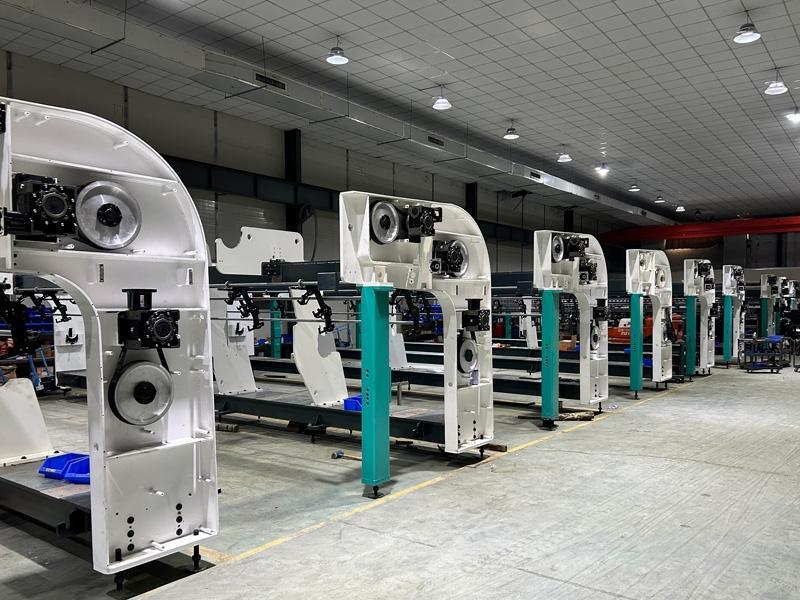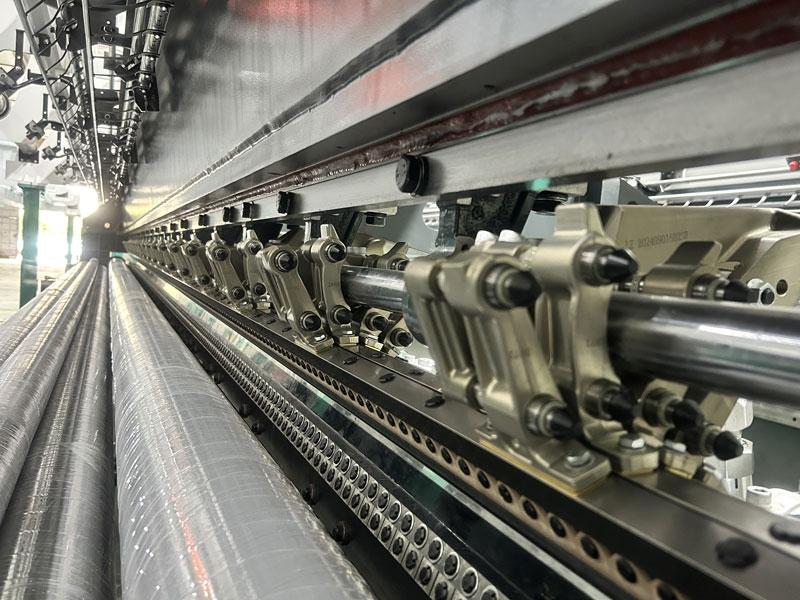Where to Find Reliable Used Karl Mayer Machine Deals
Used Karl Mayer Machine buyers care about three things: dependable uptime, fair pricing, and a seller who tells the truth. From the floor visits and commissioning projects we handle at Grand Star Technology, one pattern repeats across markets: mills rarely struggle because a machine is “used.” They struggle because the machine was a poor fit, was never inspected properly, or arrived without the right support. This guide shows how to avoid those traps, where to source with confidence, and why our tricot and raschel expertise helps you verify a match before you sign.

Why Reliability Comes Before Price
Downtime is the cost you never see on the invoice. A bargain warp knitting line becomes expensive the moment it cannot meet your style plan – whether you run elastic, pile, or breathable grounds. Before you compare prices, confirm fit for purpose:
- Does the guide-bar configuration align with your current and near-term fabric constructions?
- Can the machine hit your target gauge, hold the stitch density, and keep hand-feel consistent across shifts?
- Is there documentation on recent output and standard settings?
Choose a Used Karl Mayer Machine that matches the patterns you actually sell, not the patterns in a listing photo. This single decision stabilizes quality, reduces rejects, and keeps production predictable.
Reliability is also about repeatability. When your book of business includes automotive interiors or performance sportswear, variance kills margins. The machine should allow practical adjustments – tightening or opening fabric structure – without long trials. Clear manuals, clean electricals, and aligned guide-bar setups shorten your team’s learning curve, which cuts startup waste.
Where The Good Deals Actually Are
You do not need a long list of websites. You need a short list of trusted channels that show real technical detail. We recommend focusing on sources that publish configuration, recent use, and intended applications – not just year and cosmetics.
✅ Proven Sourcing Paths
- Manufacturer-Aligned Networks
Work with partners who understand warp knitting, not just trading. They can explain guide-bar layouts, fabric constructions, and density windows in practical terms. This prevents “mystery configurations” that derail commissioning.
- Application-Focused Brokers
Good brokers match machines to outcomes: elastic fabrics, pile structures, mosquito nets, breathable grounds, or decorative lace. They should discuss gauge choices, yarns, and density ranges relevant to your SKUs, not generic specs.
- Documented Plant Exits
Look for machines sold with notes on recent production – target fabrics, run speeds, typical stitch settings, and changeover routines. Evidence of what the machine produced last month is worth more than any repaint.
- Selective Marketplaces With Technical Filters
Listings should include guide-bar count, available gauges, and common end-uses. If the listing hides those details, move on. A serious seller is not vague about fundamentals.
How Grand Star Technology De-Risks Your Choice
As a builder and integrator, we look at the fabric you want to sell and map back to the configuration you need:
- Configuration Read-Across: We translate your roadmap- mosquito nets, upholstery, sportswear, shoe fabrics, lace-like textiles- into the guide-bar counts and fabric styles a Used Karl Mayer Machine must support.
- Production Intent Check: If you plan elastic structures or pile, we point you to machines proven to hold density across airy and close weaves. This protects speed and hand-feel while keeping waste under control.
- Commissioning Playbook: We outline yarn paths, initial stitch settings, and quality benchmarks so your team reaches steady state faster.

Tricot & Raschel Know-How You Can Use On Day One
Our own platforms shape how we evaluate used offers. What we build into new equipment – flexibility, precision, and application breadth – is exactly what you should insist on when buying used.
- Tricot: Guide-Bar Flexibility, Density Control
A capable tricot line is defined by 2, 3, or 4 guide bars and stable density control. That flexibility covers a wide span of applications – from elastic fabrics to pile constructions – without sacrificing quality or throughput. Precise gauge and density adjustments let you move from open to tight structures with minimal tuning, which keeps seasonal transitions smooth.
✅ Common Tricot Targets We Support
- Mosquito nets; mattresses and bedding bases
- Embroidery grounds, tulle, and coating substrates
- Advertising media for banners and signage
- Automotive interiors, upholstery, and sportswear
- Toy plush, outerwear, lingerie
- High-detail upholstery, shoe fabrics, cleaning textiles, and other pile fabrics
How this informs used selection: when you assess a Used Karl Mayer Machine, verify guide-bar layout, available gauge, and whether the frame, beams, and take-up can hold density consistently across your style range.
- Raschel: Pattern Capability, Efficient Throughput
Raschel platforms – single or double needle bar – excel at interlooping efficiency and smooth fabric winding. Material compatibility matters; look for stable performance with cotton, silk, nylon, and polyester. The standout strength is intricate pattern capability. From delicate lace to rugged netting, a good raschel delivers fine control without dragging speed down.
✅ Common Raschel Targets We Support
- Fashion and home: lace fabrics, embellishments, curtains, bedsheets, table cloths
- Technical textiles: fishing nets, sports nets, protective mesh
- Decorative wall coverings and patterned home furnishings
How this informs used selection: confirm that cam and patterning elements match your intended designs. A great price is not great if the pattern head cannot achieve your motif or if needle-bar choices limit yarn selection.
✅ A Quick Evaluation Checklist
- Configuration Fit: Guide-bar count, gauge range, density control, yarn paths
- Proven Output: Recent fabrics made, speeds achieved, quality metrics, scrap rates
- Mechanical Health: Beams, bearings, take-up, drive system, and lubrication history
- Controls & Docs: PLC/HMI condition, manuals, wiring diagrams, spare parts list
- Commissioning Plan: Initial settings, yarn specs, trial fabric, acceptance criteria
Run this checklist before you negotiate price. It keeps attention on the value that actually sustains your margins.
Work With A Partner Who Cares About Your Styles
At Grand Star Technology, we do not treat used equipment as a blind trade. We start with your catalog, map required constructions, and then point you toward machines – new or used – that will make those fabrics profitably. If you are exploring a Used Karl Mayer Machine, we can:
- Validate guide-bar and gauge requirements against your SKUs
- Recommend density and stitch baselines for first-week production
- Flag hidden risks that slow commissioning- before you pay freight
Call To Action: Planning a purchase or reviewing listings now? Share your target fabrics and a link to the machine spec. We will perform a rapid configuration check and provide a shortlist of reliable Used Karl Mayer Machine options that fit your roadmap. Contact Grand Star Technology for a fast, practical review and move from inquiry to production with confidence.

Hey, I’m Vincent!
Solving complex challenges with precision and creativity in the warp knitting industry. Passionate about advancing textile engineering and turning innovative ideas into reality. Shaping the future of warp knitting.

